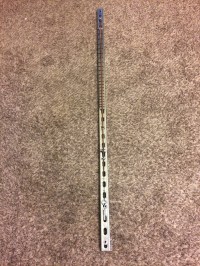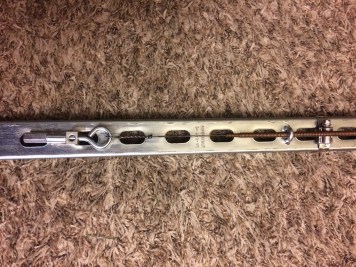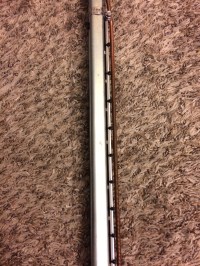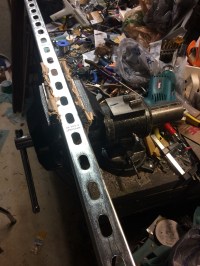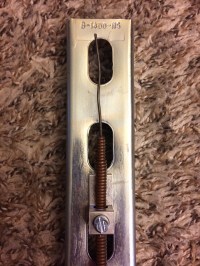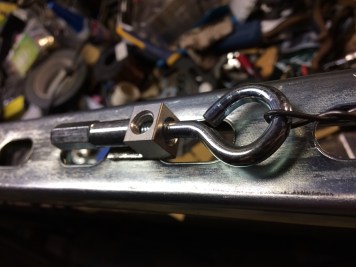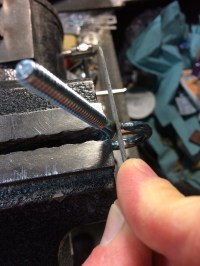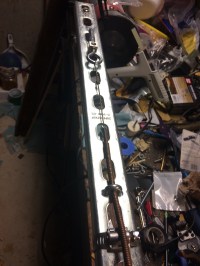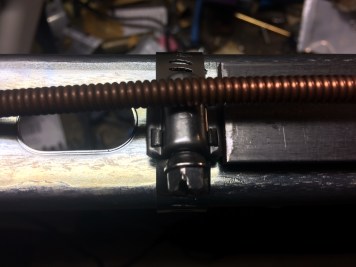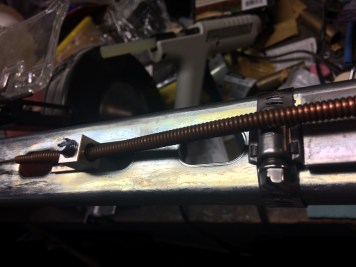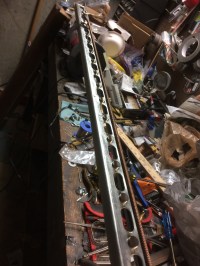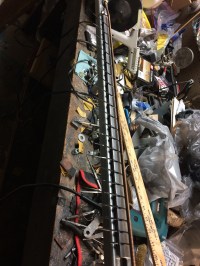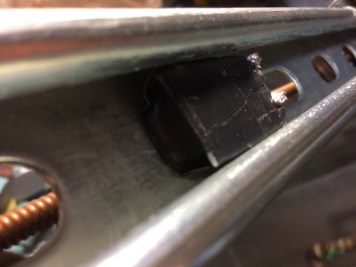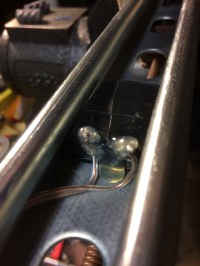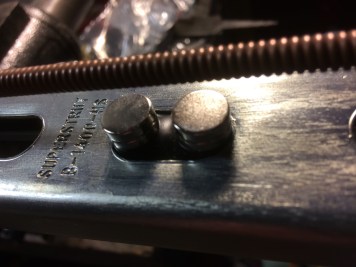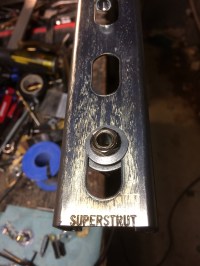


I chanced upon this banjo uke for a steal at the local antique mall and couldn’t pass up a new project. From what I’ve read, this style of banjo ukulele was produced through the 20’s and 30’s and it’s in really great shape compared to some I have seen for sale online.

This instrument came with a traditional drumhead, but no bridge. Against the advice of most ukulele enthusiast sites my plan was to string it up with steel strings, so that I could add a removable pickup, which is apparently I’ll advised because the neck could succumb to the pressure.
The Before Pictures:





Finish:



The finished was scratched, but was otherwise in fine shape; however, I wanted to add my own style, so I sanded off the finish and stained it with a vinegar and steel wool concoction.
I started with the white vinegar mix that adds a rusty, yellow hue while darkening deep spots. Then, I finished with an apple cider mix that adds a bit more color, grain depth and shine. The mix results in a distressed look that enhances the natural grain, while adding subtle nuances as well as dramatic extremes.
Drumhead and Bridge:

I began by cutting a piece of brass rod for the bridge and then strung it with the top four strings from a pack of DR Pure Blues 9’s.
The uke tuned up, but the drumhead was strained, which lowered the action to the point of rubbing on the rim. So I had to find a new material for the head that would be thin enough to offer as good of a voice as the drumhead.

I had a paint can lid laying on the bench and it appeared to be the right size, so I cut off the rim and it was a perfect fit to replace the drumhead.
Tuners and Tailpiece:


The tuners weren’t complete trash, but I didn’t like the look of them and since I was going to use steel strings, it seemed like a good idea to install decent tuners. I found a set of Grovers that worked great and had a lower profile.
The tailpiece was meant for holding strings with smaller balls ends, so I had to drill small holes in the body to accommodate the steel string balls and allow the tailpiece to sit flat against the body.
Pickup:

Since the paint can worked out so well, it created a perfect opportunity for using a removable pickup made from two of my Nd144 Electromagnetic Cigar Box Guitar Pickups. I had originally built a similar pickup for the “Teeth for Days” build, which had a body that was to thin to house a permanently installed pickup.
Therefore, I created a compact pickup and 1/4″ jack combination that could be easily installed and removed. Since the paint can lid is made of magnetically sensitive material, the pickup can be installed at a whim.


This solves two problems—first, placing the pickup directly on the paint can lid stifles the resonating effect to some degree, so easy installation and removable allows the user to play acoustically without compromise. Second, installation via the inherent magnets keeps me from having to drill extra holes and add unsightly hardware for both the pickup and the output jack. In short, the pickup is fully functionally electric without radically changing the acoustic nature of the instrument.

The most interesting and functional aspect of this pickup is its ability to be removed and potentially used to electrify/amplify another guitar with a body made from magnetically sensitive material, such as a lunch box or cookie tin. The pickup and output jack is wired up and taped together as one unit to simplify this process.

A second feature is the exposed, copper ground wire that makes contact with the paint can lid upon installation. This signal travels through the all magnetically sensitive materials that come in contact with the chain, so the paint can lid, bridge (if changed to steel), strings, and tailpiece all become a place to ground the signal, thus reducing amplifier noise/hum.
Accessories:

I added a strap button comprised of a security bolt and a brass knurled nut. I simply drilled a larger hole in the body and tailpiece to accommodate the larger bolt.



The strap was made from duct tape printed with an American flag design and the headstock strap tie was made of black duct tape with a brass binding screw to hold everything together.
Final Word…
This was a cool project and I developed and appreciation for the ukulele and the benefits of its small size, along with this instrument’s marriage with the banjo.
Check out this quick video that offers this instrument’s amplified and acoustic tones:
Thanks,
![]()


